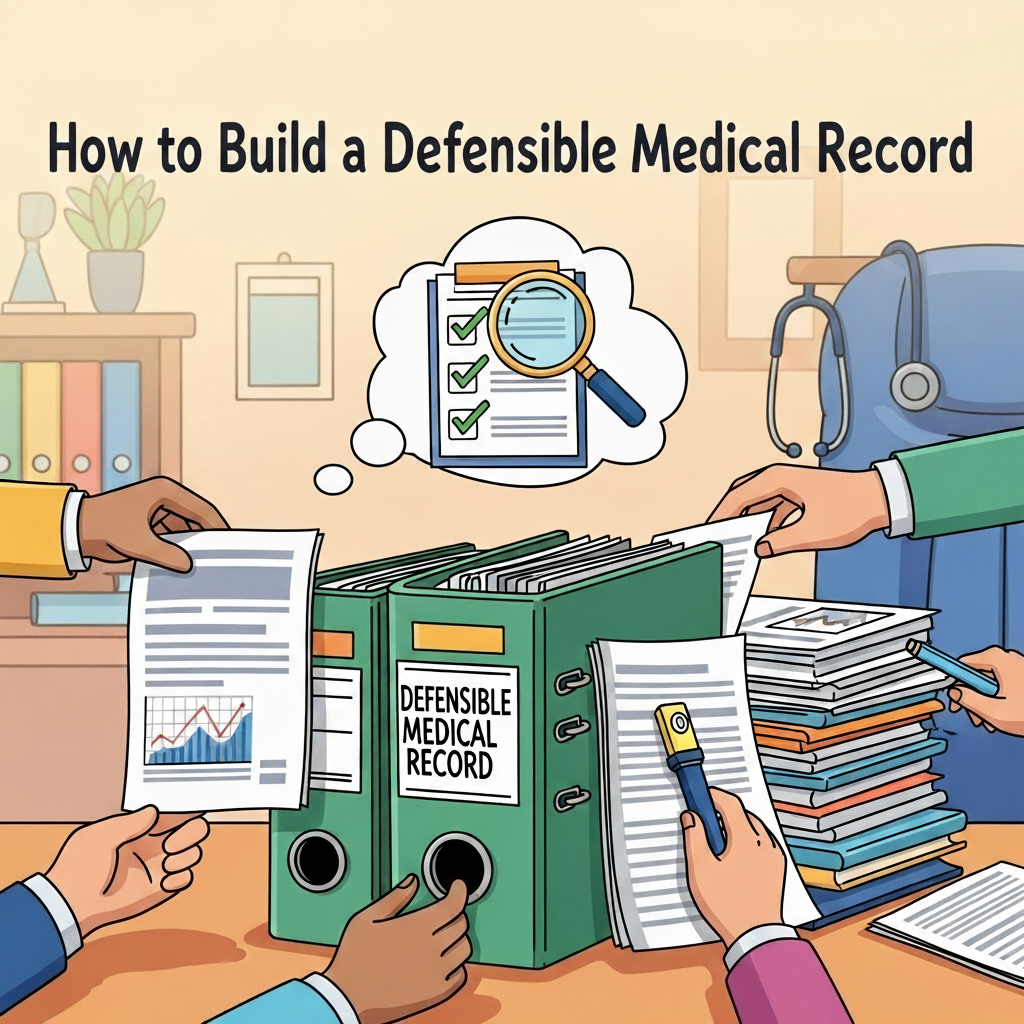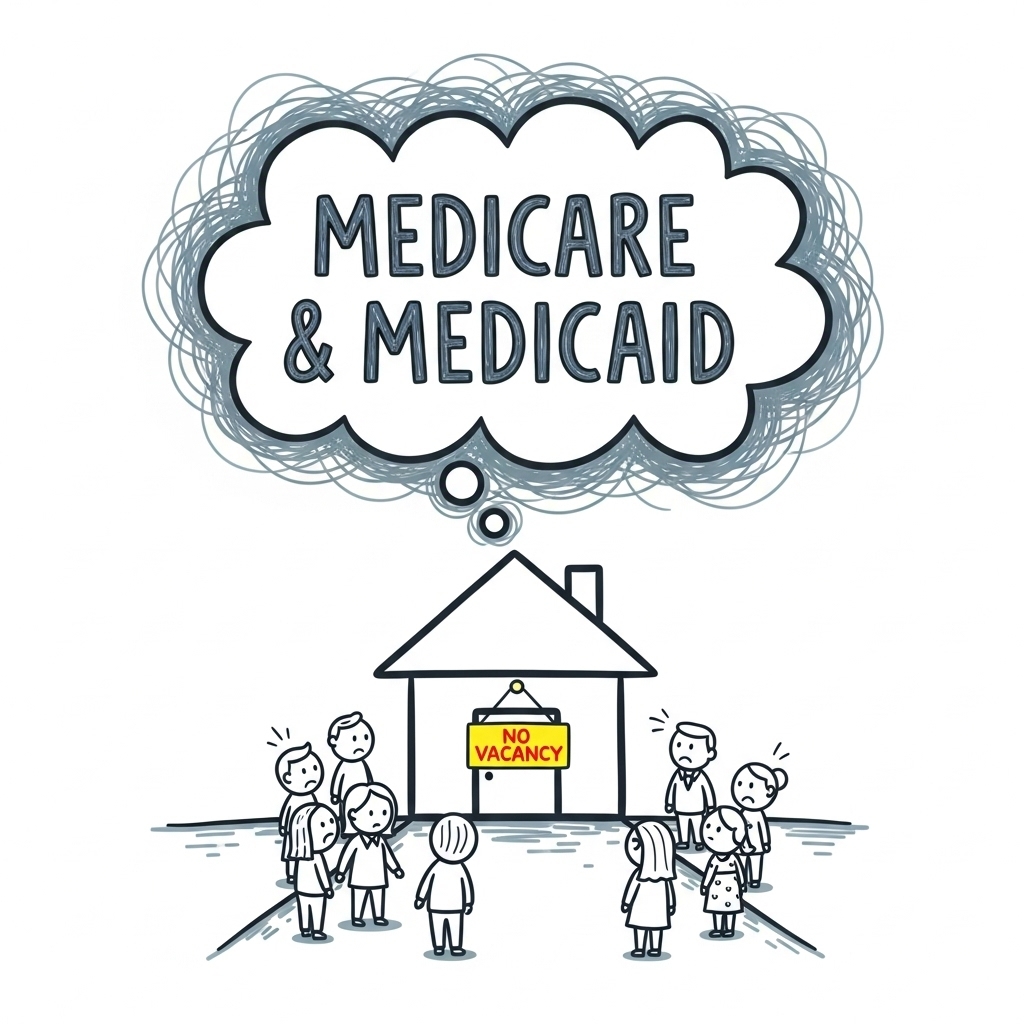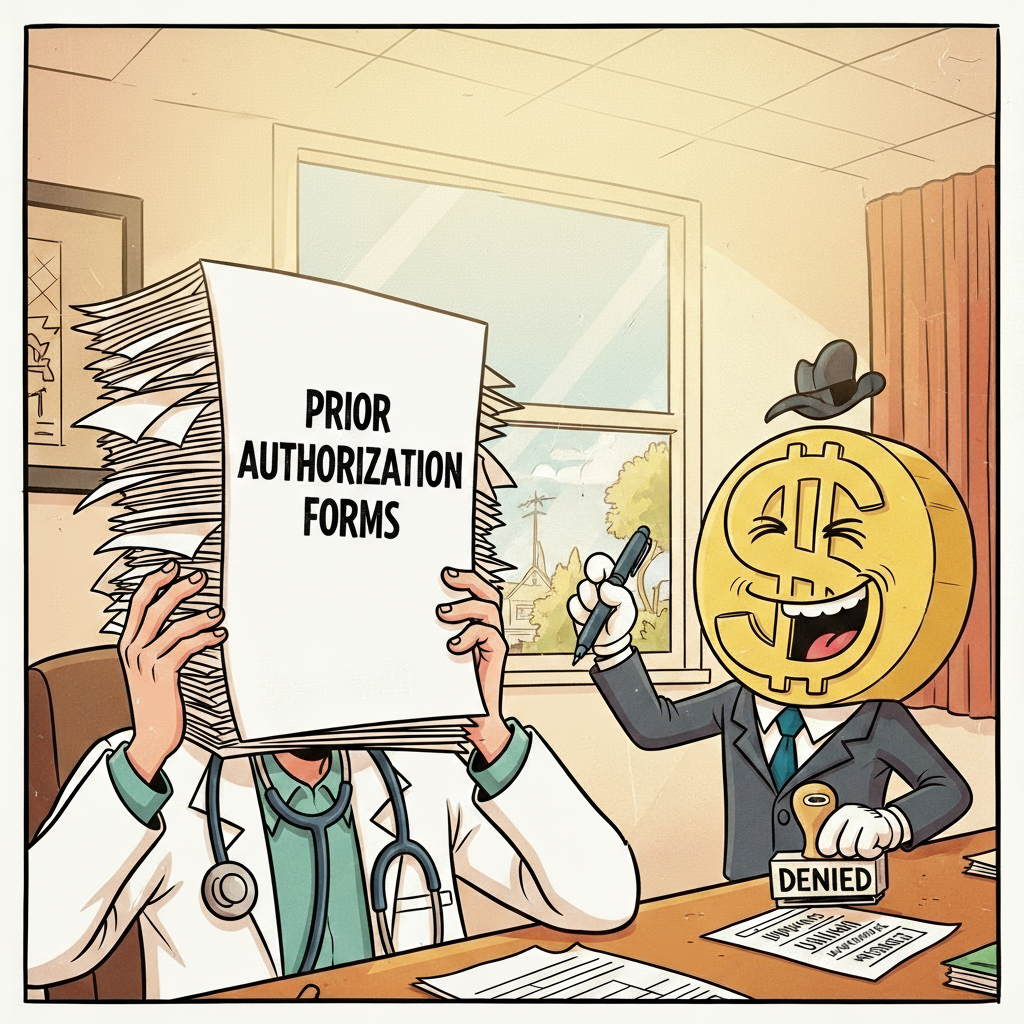
Introduction: If It’s Not in the Record, It Didn’t Happen
In the world of controlled substance prescribing, documentation is your first and last line of defense.
When regulators, insurers, or attorneys review your practice, they aren’t in the exam room with you—they only see what’s in the chart.
A complete, well-structured medical record doesn’t just tell the story of patient care—it proves that care was responsible, compliant, and clinically justified.
Why Documentation Matters in Controlled Substance Prescribing
- Regulatory Protection
DEA, state boards, and payers expect to see proof of monitoring, risk assessment, and follow-up. Consistency for all patients is critically important. - Clinical Continuity
Good records ensure any provider can safely manage a patient. Prospective care plans demonstrate complex medical decision-making and provide a clear strategy for covering providers. - Legal Defense
In the event of a complaint or lawsuit, your documentation is your evidence. If it’s not written down, it didn’t happen. - Billing Compliance
Good documentation proves medical necessity and may prevent audit recoupments. If records don’t reflect our extensive data processing, accurate billing is difficult. Better documentation ensures fair compensation.
Core Elements of a Defensible Medical Record
1. Initial Risk Assessment
- Diagnosis and clinical justification for the controlled substance.
- Patient history, including substance use and comorbidities.
- Baseline Prescription Monitoring Program (PMP) review.
2. Signed Controlled Substance Agreement (CSA)
- Document the date signed and location of the agreement in the record.
- Note that the agreement was reviewed with the patient.
3. Ongoing Monitoring
- PMP checks with dates and findings.
- Urine drug testing results and interpretation.
- Pill counts and discrepancies, if any.
4. Visit Notes
- Symptom review, functional status, and medication effectiveness.
- Assessment of adherence and any side effects.
- Adjustments to therapy with rationale.
5. Patient Education
- Counseling on risks, safe storage, and potential drug interactions.
- Document patient’s understanding and agreement.
6. Follow-Up Plan
- Next visit date based on risk category.
- Interim monitoring steps, if applicable.
Best Practices for Strong Documentation
- Be Specific – Avoid vague terms like “patient doing well”; describe functional improvements or specific symptom changes.
- Use Templates Wisely – Templates can improve consistency but should allow room for individualized notes.
- Document the Rationale – For dose changes, therapy continuation, or discontinuation.
- Time-Stamp Monitoring Actions – Clearly indicate when PMP checks, UDTs, and pill counts occurred.
- Keep It Objective – Focus on factual observations and test results, not assumptions.
Common Pitfalls to Avoid
- Copy-Paste Errors – Repeating outdated information undermines credibility.
- Missing Dates – Without timestamps, monitoring actions may not count in the eyes of regulators.
- Inconsistent Follow-Through – Documenting a problem without recording the corrective action can be as damaging as no documentation.
Benefits of Comprehensive Documentation
- Reduces legal exposure.
- Satisfies regulatory and payer requirements.
- Improves clinical decision-making.
- Demonstrates professionalism and diligence.
Final Thoughts: Think Like an Auditor
When documenting controlled substance care, imagine a skeptical third party reviewing your record years later.
If every decision and action is clear, justified, and supported by data, you’ve built a defensible record.
The best compliance program in the world means nothing if it’s not in the chart.
About the Author
Douglas J. Jorgensen, DO, CPC, FAAO, FACOFP
Dr. Doug is a physician, consultant, and national educator on healthcare compliance, controlled substance prescribing, and documentation standards. He helps providers create medical records that protect both patient safety and professional integrity.


